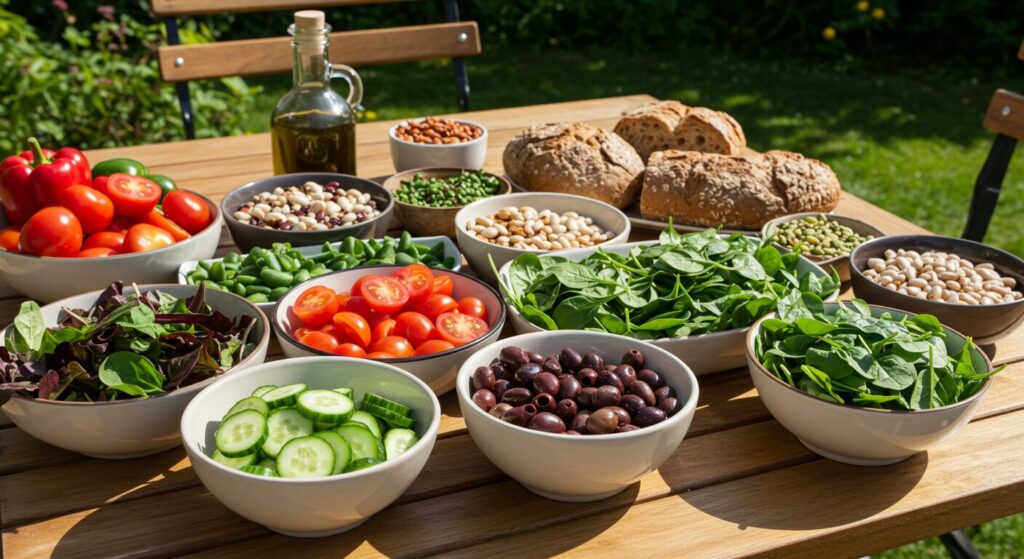
Blue Zone
$12.75 — or $12.75 Original price was: $12.75.$10.84Current price is: $10.84. / week
The Blue Zone diet is a dietary pattern inspired by regions with the world’s longest-lived populations, emphasizing plant-based foods, whole grains, and a limited or remove intake of meat, processed foods, and added sugars.
Ingredients
Cal
N/A
Prot
N/A
Carb
N/A
Fat
N/A
Our Take On Blue Zone
The Blue Zone diet is based on the eating patterns and lifestyle habits of people living in specific regions known as Blue Zones, where individuals have been found to live longer and healthier lives. These regions include Ikaria in Greece, Okinawa in Japan, Sardinia in Italy, and in Costa Rica. The Blue Zone diet is characterized by plant-based foods, whole grains, legumes, and a limited intake of processed foods and meats.
Healthy Benefits and History:
- Longevity and Health: The Blue Zone diet is associated with increased longevity and a reduced risk of chronic diseases, including heart disease, certain cancers, and diabetes. The emphasis on plant-based foods, whole grains, and legumes provides a rich source of fiber, antioxidants, and essential nutrients, supporting overall health.
- Weight Management: The Blue Zone diet encourages consuming whole, unprocessed foods that are naturally lower in calories and higher in nutrients. This can contribute to weight management and healthy body weight.
- Heart Health: The predominance of plant-based foods, including fruits, vegetables, and whole grains, in the Blue Zone diet is linked to improved heart health. These foods are typically low in saturated fats and high in heart-healthy nutrients, such as fiber and antioxidants.
- Cultural and Social Elements: The Blue Zone diet emphasizes the importance of community and social connections in promoting well-being. Eating meals together, practicing portion control, and savoring food are cultural aspects that contribute to a healthy relationship with food.
- Plant-Based Foods: Include a variety of fruits, vegetables, whole grains, legumes, nuts, and seeds, which form the foundation of the Blue Zone diet. These foods provide essential nutrients, fiber, and antioxidants.
- Healthy Fats: Incorporate sources of healthy fats, such as olive oil, nuts, and avocados, which are consumed in moderation in the Blue Zone diet.
- Limited Animal Products: Animal products, including meats and dairy, are consumed sparingly in the Blue Zone diet. They are often treated as special occasion food rather than a staple.
- Processed Foods: Minimize the consumption of processed foods, including sugary snacks, refined grains, and packaged meals, which are not typical in the traditional Blue Zone diet.
- Red and Processed Meats: Reduce the intake of red meats and processed meats, which are associated with increased health risks.
- Excessive Added Sugars: Limit the consumption of added sugars found in sweets, sugary beverages, and processed snacks.
